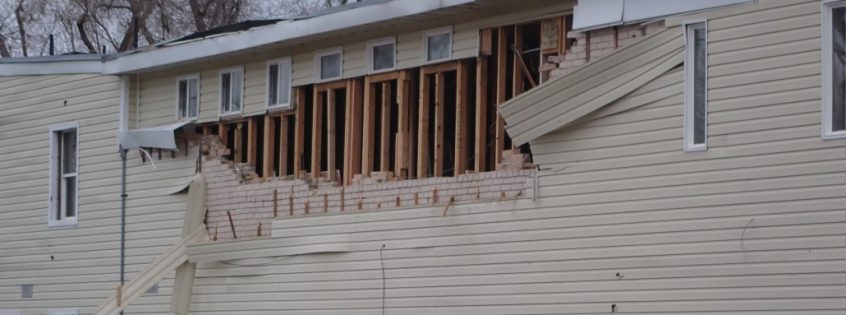SALT LAKE CITY – Earthquake damage to a home or business can mimic regular wear and tear. This can allow it to go unnoticed because it’s not obvious or may be located in rarely used rooms or spaces.
You may have sustained damage from the recent Utah earthquake and aftershocks and not even know it. So it’s important to take a second look, as “hidden” damage could pose major structural or safety hazards.
Taking the simple steps below will help you spot any earthquake damage.
- Examine the entire outside of the structure for collapse or obvious movement of the foundation. Is there “crushing” damage at the ends of the walls or at the bottom corners?
- Check the ground for areas where the ground may have shifted. Are there any breaks in fence lines or other structures that might indicate nearby damage?
- Does the building look crooked or out of plumb?
- Is the floor or roof pulling away or separated from the building supports? Are decks or porches now separated from the main structure? Are exits now susceptible to blockage?
- Are there new or bigger cracks in the drywall, stucco or plaster? Does the drywall have “stair step” or “X” shaped cracks ─ a clear indicator of earthquake damage? Check closely around windows and doorframes for radiating cracks. For brick or concrete block homes, is there “stair step” cracking the joints?
- Does the floor feel “bouncy,” “soggy” or “mushy” when you walk on it? This may indicate damage beneath the floor.
- Has anything fallen off a chimney or parapet? Are there any signs of cracks in the chimney’s mortar? Such cracks can be structural, fire hazards and/or allow deadly carbon monoxide to leak into the house.
- To ensure your safety, have a certified chimney inspector evaluate your chimney. Contact your insurance company, mortgage company, or the Chimney Safety Institute of America (www.CSIA.org) to find someone.
- Inspect stairs for stability. If they were solid before the quake, and now they wobble when you walk on them, they may be a hazard. Are the banister and supporting columns secure?
- Are any windows or doors newly jammed or blocked? Can you easily raise and lower windows, or have they become difficult to move since the quake? Do all doors open and close without resistance?
- Inspect crawl spaces, stairwells, basements and attics for signs of damage such as exposed or cracked beams, roof leaks, and foundation cracks.
- Check basement floors and exterior walls for cracks and bulges that may indicate more serious problems.
- Look for damage to ceilings, partitions and light fixtures, as well as the roof, fuel tanks and other attachments to the building’s main frame.
- Check your furnace and water heater connections to make sure they are tight and not leaking.
- Check for sewage and water line damage. If you suspect sewage lines are damaged, avoid using the toilets and call a plumber. If you are on a water system and the water pipes are damaged, contact the water company and avoid using water from the tap. If you have a water well and suspect damage to the well or pipes, don’t use the water and call a well company. You can obtain safe water from undamaged water heaters or by melting ice cubes.
If you decide to hire a Professional Structural Engineer to inspect your home, you can check their license validity at https://secure.utah.gov/llv/search/index.html.
Contact a FEMA Mitigation Specialist for more information about making your home and family safer before, during and after an earthquake” at [email protected].
Utah residents impacted by the March 18 quake and aftershocks who have not registered with FEMA can still apply for assistance at www.DisasterAssistance.gov or by calling the FEMA Helpline at 800-621-3362 (FEMA) or (TTY) 800-462-7585. Help is available in most languages.
If you require a reasonable accommodation or an alternative format of available information such as American Sign Language format, or audio format, please submit your request to: [email protected].
For more information on Utah’s recovery from the Magna Quake, visit, www.fema.gov/disaster/4548, or https://earthquakes.utah.gov/magna-quake/.
###
FEMA’s mission is helping people before, during, and after disasters

